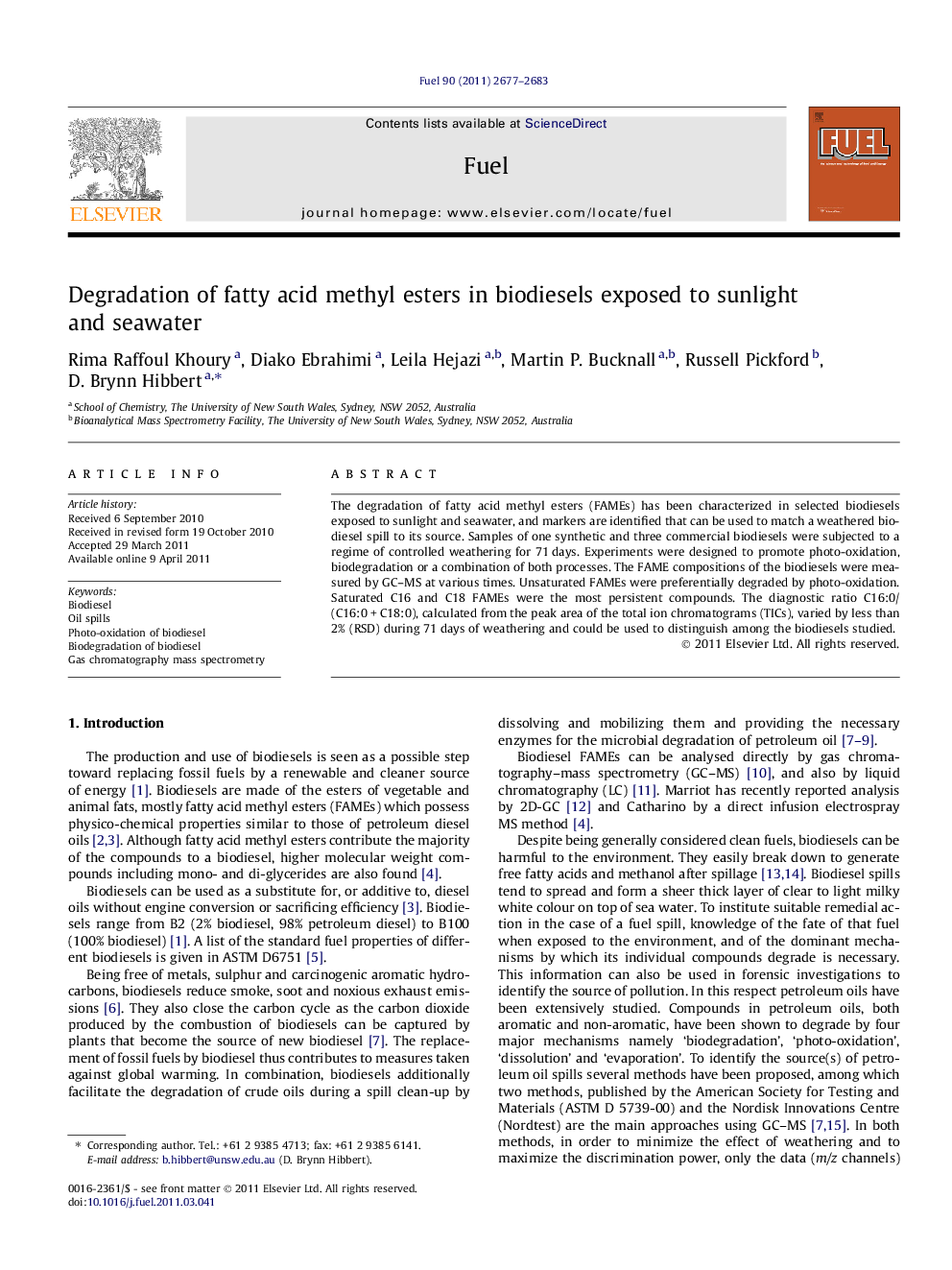| Article ID | Journal | Published Year | Pages | File Type |
|---|---|---|---|---|
| 10272764 | Fuel | 2011 | 7 Pages |
Abstract
The degradation of fatty acid methyl esters (FAMEs) has been characterized in selected biodiesels exposed to sunlight and seawater, and markers are identified that can be used to match a weathered biodiesel spill to its source. Samples of one synthetic and three commercial biodiesels were subjected to a regime of controlled weathering for 71Â days. Experiments were designed to promote photo-oxidation, biodegradation or a combination of both processes. The FAME compositions of the biodiesels were measured by GC-MS at various times. Unsaturated FAMEs were preferentially degraded by photo-oxidation. Saturated C16 and C18 FAMEs were the most persistent compounds. The diagnostic ratio C16:0/(C16:0Â +Â C18:0), calculated from the peak area of the total ion chromatograms (TICs), varied by less than 2% (RSD) during 71Â days of weathering and could be used to distinguish among the biodiesels studied.
Related Topics
Physical Sciences and Engineering
Chemical Engineering
Chemical Engineering (General)
Authors
Rima Raffoul Khoury, Diako Ebrahimi, Leila Hejazi, Martin P. Bucknall, Russell Pickford, D. Brynn Hibbert,
